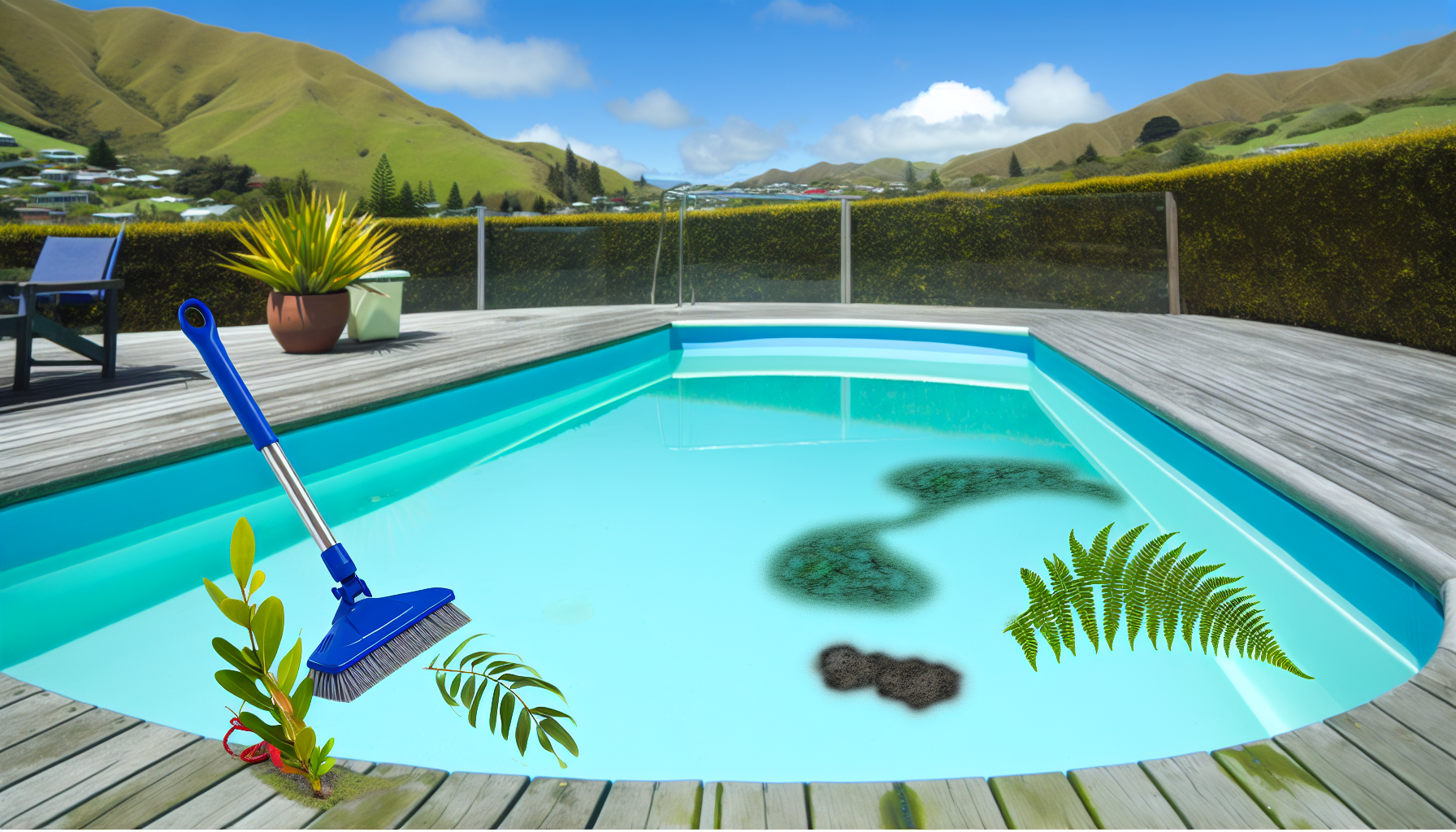No one likes swimming in a green, murky pool. But let’s be honest—dumping a bunch of chemicals in your pool isn’t exactly ideal either, especially if you prefer a more natural approach. The good news? You don’t need harsh chemicals to get rid of algae. Here’s what you can do instead.
Get Your Pool Circulating
Algae love still water. If your pool pump isn’t running enough, or your water isn’t circulating properly, you’re basically giving algae a perfect home. So, first things first—make sure your pump is on for at least 8-12 hours a day.
Check your filter too. If it’s clogged up with debris, it won’t do its job properly. If you’re using a sand filter, backwash it. If you have a cartridge filter, give it a good clean.
Scrub the Pool Walls and Floor
Algae stick to the surfaces of your pool like that stubborn food dried onto your dishes. And just like you wouldn’t leave a greasy pan to “fix itself,” you shouldn’t expect algae to magically disappear either.
Grab a pool brush (one with strong bristles works best) and scrub the walls and floor of your pool. This loosens algae and makes it easier for your filter to catch. You’ll need to repeat this daily to stay on top of it.
If you don’t have a decent pool brush, check out Bunnings or Mitre 10—both have a range of cleaning tools to choose from.
Use a Pool Vacuum
Brushing gets the algae off the surfaces, but you still need to remove it from the water. A pool vacuum can suck up the loosened algae so it doesn’t settle back down.
If you have a manual vacuum, set it to “waste” mode so you’re not just recirculating the algae back into the pool. If you’re after an easier option, a robotic pool cleaner might be worth it—check out Pool & Spa Warehouse NZ for options.
Shock Your Pool Naturally With Hydrogen Peroxide
If you’re looking for an alternative to chlorine, hydrogen peroxide (food-grade, 35%) is a great natural option. When mixed with water, it breaks down into oxygen and water—no harsh chemicals left behind.
Pour it in, run the pump, and let it do its thing—it works best in direct sunlight. The algae will die, and your filter will take care of the rest. You can often find food-grade hydrogen peroxide at health stores like HealthPost or specialty online retailers.
Use a UV Pool Sanitiser
A long-term, hands-off method? Install a UV pool sanitiser. These systems zap bacteria and algae with ultraviolet light, killing them before they can take over. Yes, they’re a bit of an investment upfront, but they reduce the need for chemicals long-term.
If you’re interested, check out suppliers like Pools & Spas NZ for UV sanitising options.
Try Barley Straw
This might sound weird, but barley straw is a known natural algaecide. As it breaks down in water, it releases compounds that stop algae from growing. You can pop small nets of barley straw into your pool or the skimmer basket.
It’s not a quick fix, but it does help prevent algae from coming back. You might have to order it online, but eco-friendly shops or gardening stores sometimes stock it.
Keep Your Pool Balanced
Algae thrive in unbalanced water. The key is to check your pH and alkalinity levels regularly. Aim for:
- pH: 7.2-7.6
- Alkalinity: 80-120 ppm
A simple test kit from PB Tech or your local pool shop will help you stay on top of this. If your pH is too high, even natural treatments won’t work as effectively.
Make It Hard for Algae to Come Back
Once you’ve gotten rid of algae, the real secret is keeping it from coming back. Here’s what works:
- Run your pump daily—at least 8 hours.
- Brush and vacuum regularly—don’t wait for the green tinge to return.
- Check water levels weekly—make sure pH and alkalinity are balanced.
- Keep debris out—leaves and dirt give algae nutrients to thrive, so scoop them out when you see them.
The Bottom Line
You don’t need a stockpile of chemicals to keep your pool clear. A bit of elbow grease, proper circulation, and some natural alternatives like hydrogen peroxide or barley straw can do the trick. Stick to these steps, and you’ll keep that pool clean and inviting—without the harsh stuff.
Time to enjoy the pool the way it should be—clear, fresh, and chemical-free!


Leave a Reply